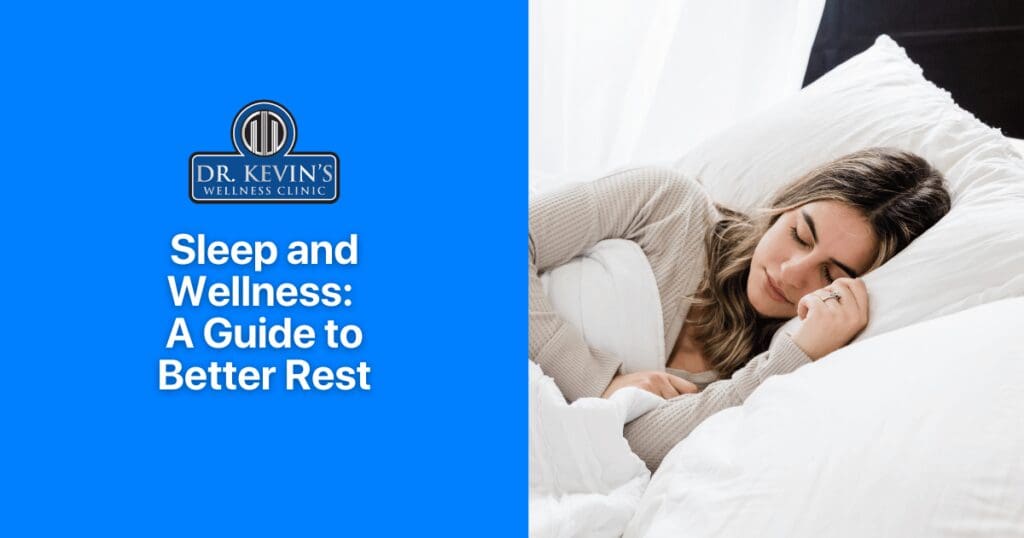Sleep is more than just a way to feel refreshed. It also plays a key role in keeping both your body and mind healthy. However, with the demands of work, family, and personal commitments, it’s all too common to push sleep to the bottom of our priority lists.
Many of us sacrifice rest for work, social activities, or even late-night scrolling, often without realizing the impact it has on our overall well-being.
This Wellness Month, let’s talk about one of the most effective ways to boost your overall well-being: improving your sleep.
Good sleep habits can lead to better mood, sharper thinking, and even a stronger immune system. In this article, we’ll look at what makes for good sleep and some simple ways to get a good night’s rest.
Understanding Your Sleep Cycle
Sleep isn’t just an on-off switch. It’s a complex process with different stages, each playing an important part in your overall wellness.
Sleep is broadly categorized into two main types: Non-REM (NREM) and REM sleep. NREM sleep consists of three stages and is often called “quiet sleep” as it’s when your body repairs and regrows tissues, builds bone and muscle, and strengthens the immune system.
REM sleep, on the other hand, is when your brain is most active, dreams occur, and it’s believed to be essential for cognitive functions like memory, learning, and creativity.
Throughout the night, your body cycles through these stages multiple times.
Non-REM Sleep: The Quiet Stages
Stage 1 (Light Sleep): This is the transition between wakefulness and sleep. It lasts only a few minutes. During this stage, your heartbeat, breathing, and eye movements slow down, and your muscles relax with occasional twitches.
Stage 2: This is a period of light sleep before you enter deeper sleep. Your heartbeat and breathing slow further, your body temperature drops slightly, and brain waves become slower, with occasional bursts of rapid waves.
Stage 3 (Deep Sleep): This stage is crucial for feeling refreshed in the morning. Your heartbeat and breathing slow to their lowest levels, your muscles are fully relaxed, and it’s harder to wake up during this stage. This is when your body repairs injuries and strengthens your immune system.
REM Sleep: The Dream Stage
REM stands for Rapid Eye Movement. It’s when your brain is most active during sleep. During REM sleep, your eyes move quickly behind closed lids, and most vivid dreams occur.
Your body becomes temporarily paralyzed to prevent you from acting out these dreams. Meanwhile, your brain is busy processing information and forming memories.
Interestingly, during REM sleep, your breathing becomes faster and irregular, while your heart rate and blood pressure increase to near waking levels. This stage is crucial for learning, memory consolidation, and mood regulation.
REM sleep typically starts about 90 minutes after you fall asleep and repeats several times throughout the night. As the night progresses, REM periods usually get longer, while deep sleep periods get shorter.
A full sleep cycle typically lasts about 90 to 120 minutes, and you go through 4-6 cycles per night. Understanding these stages can help you appreciate the complexity of sleep and why it’s so important to get enough quality rest each night.
Simple Steps to Improve Your Sleep
Now that you understand the stages of sleep, let’s look at some practical ways to improve your rest. These tips can help you create better sleep habits and a more sleep-friendly environment.
Create Your Sleep Sanctuary
Your bedroom should be a sleep haven. Keep it dark with blackout curtains or an eye mask. A cool room ideally around 65° – 68°F (18° – 20°C) works best for most people. If noise is an issue, try earplugs or a white noise machine. Keeping your room tidy can also help calm your mind.
Stick to a Sleep Schedule
Your body loves routine. Try to go to bed and wake up at the same time every day, even on weekends. This consistency helps regulate your body’s internal clock, making it easier to fall asleep and wake up naturally. It’s best to avoid naps after 3 PM and give yourself an hour to wind down before bed.
Create a Pre-Sleep Routine
A relaxing bedtime routine signals your body it’s time to sleep. This could be reading a book (not on a screen), taking a warm bath, doing some light stretches, or practicing meditation. These activities help you transition from the alertness of your day to the relaxation needed for sleep. Find what works for you and make it a habit.
Your Bed Matters
A comfortable mattress and supportive pillows can significantly improve your sleep quality. Choose a mattress that supports your body type and sleep style. It’s generally a good idea to replace your mattress every 7-10 years. Pillows should keep your head and neck aligned, promoting proper posture during sleep. Don’t forget to wash your bedding regularly to keep allergens at bay and maintain a clean sleep environment.
Improving your sleep habits is a gradual process. Start with one or two changes that feel manageable, and build from there. As you incorporate these strategies, you may begin to notice improvements in your overall well-being.
At our functional wellness practice in Lafayette, LA, we’ve seen firsthand how sleep quality can impact a wide range of health conditions.
Patients come to Dr. Kevin’s Wellness Clinic with various issues, from rheumatoid arthritis and diabetes to thyroid problems and more. While many factors contribute to these conditions, we often find that sleep patterns play a significant role in the bigger picture of health.
If you’re struggling with the health concerns mentioned above, we encourage you to book a discovery call with our wellness clinic in Lafayette, LA. Our approach goes beyond just treating symptoms – we aim to address the root causes of health issues, with sleep often being a key piece of the puzzle.
We will take a comprehensive look at your health and then work together to develop a personalized plan for improved wellness.
.png)
